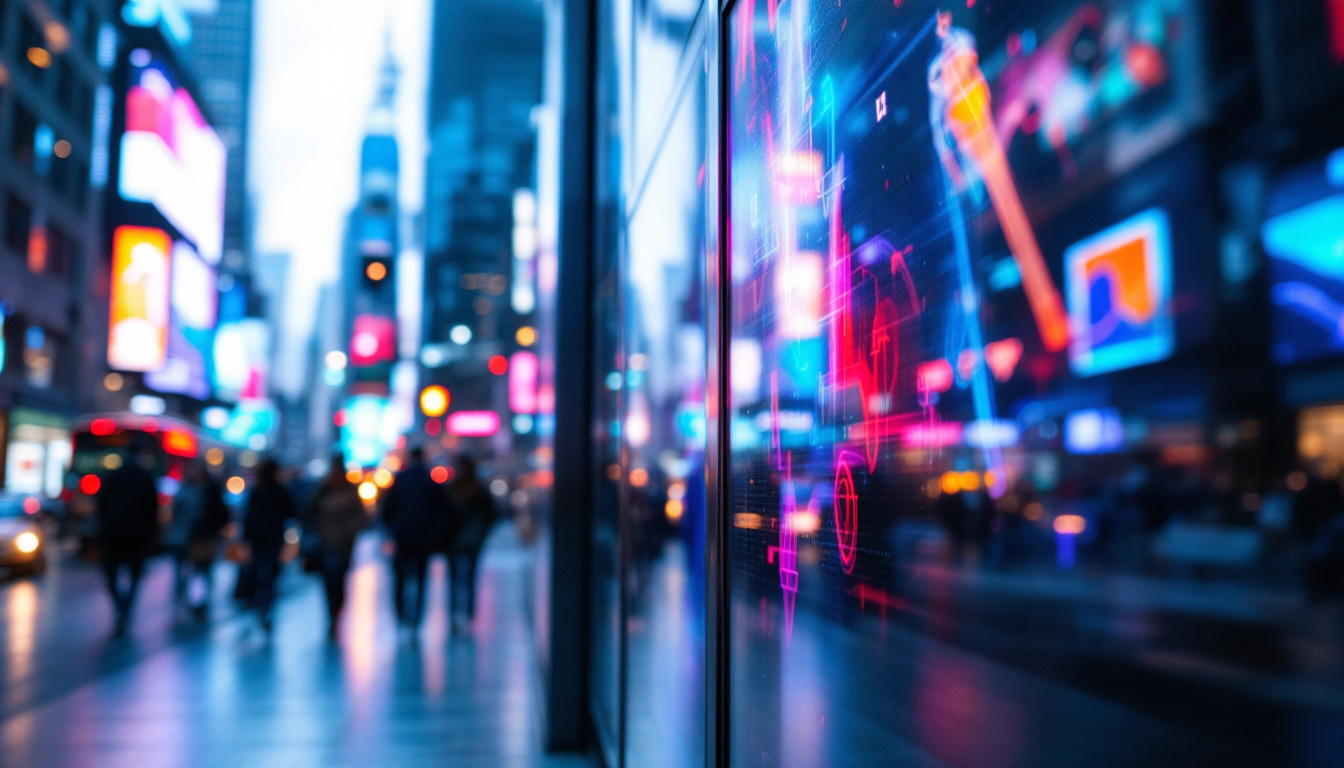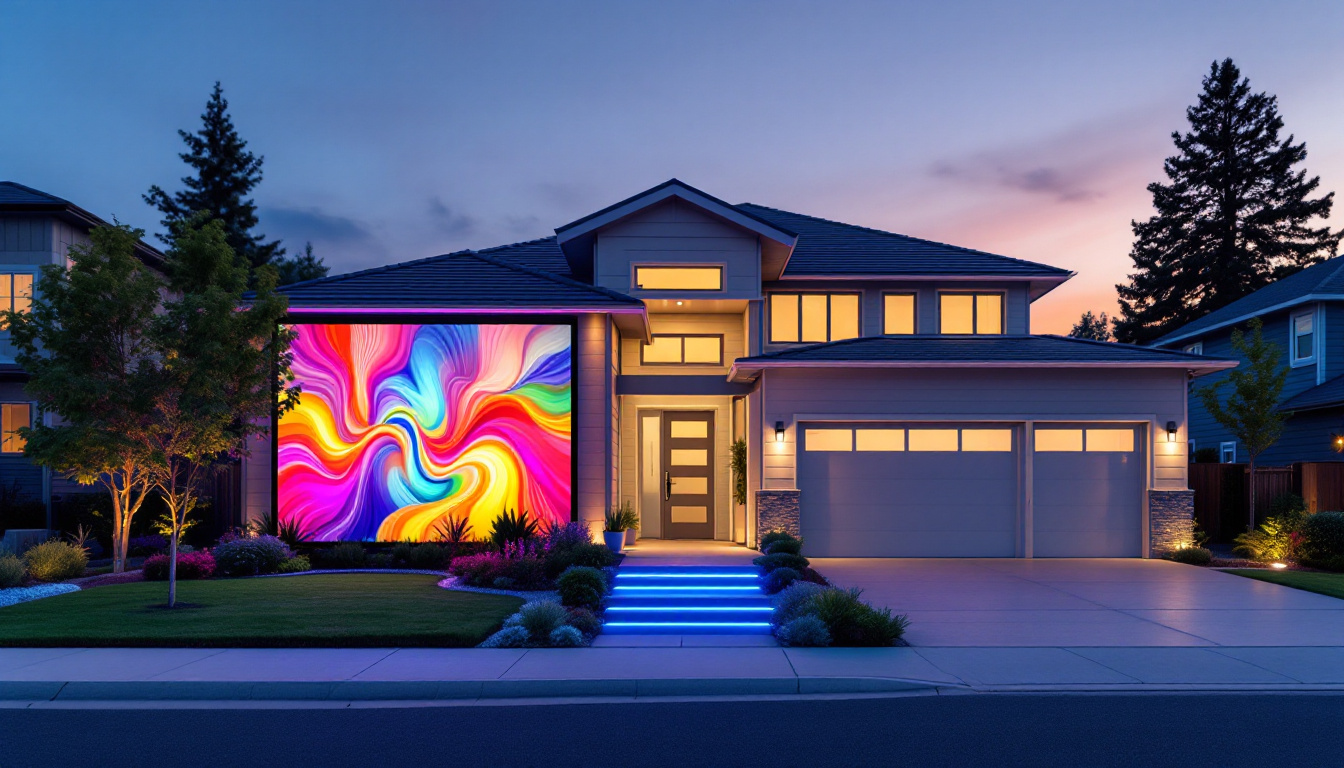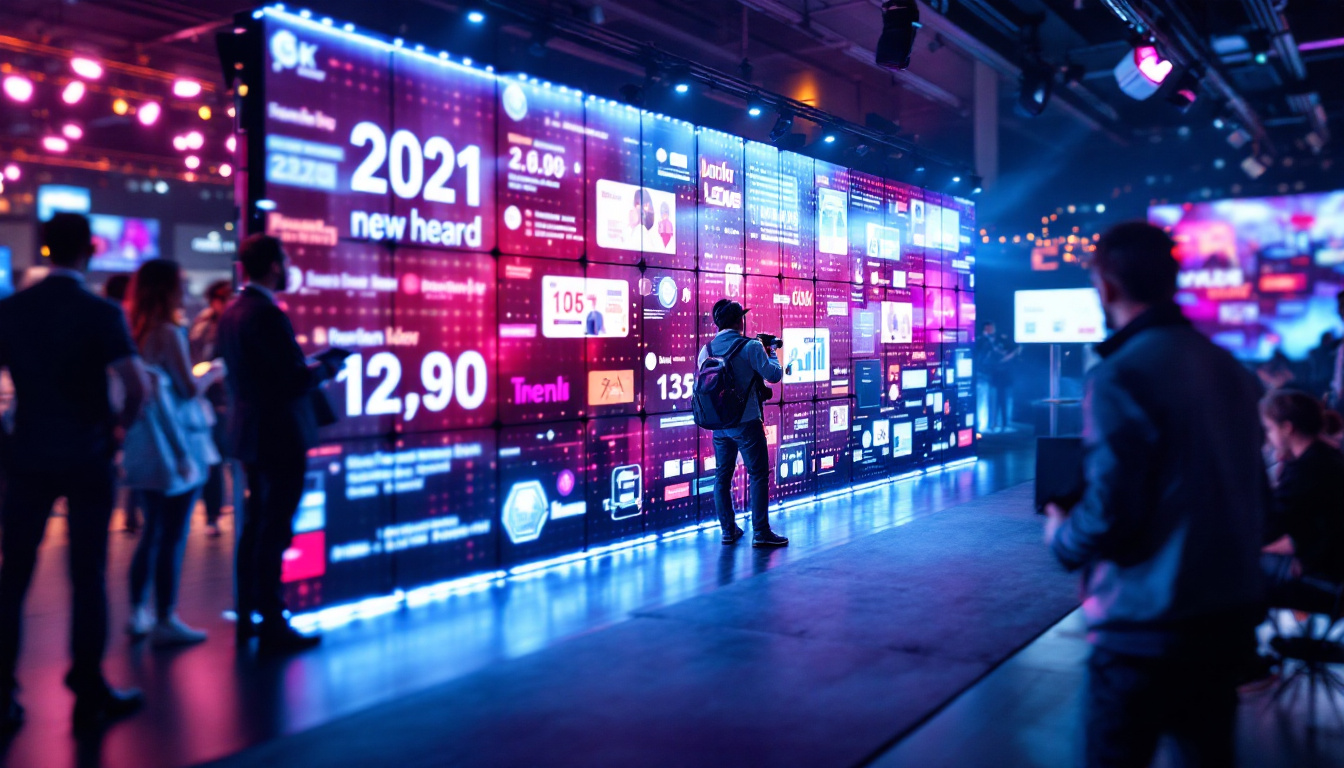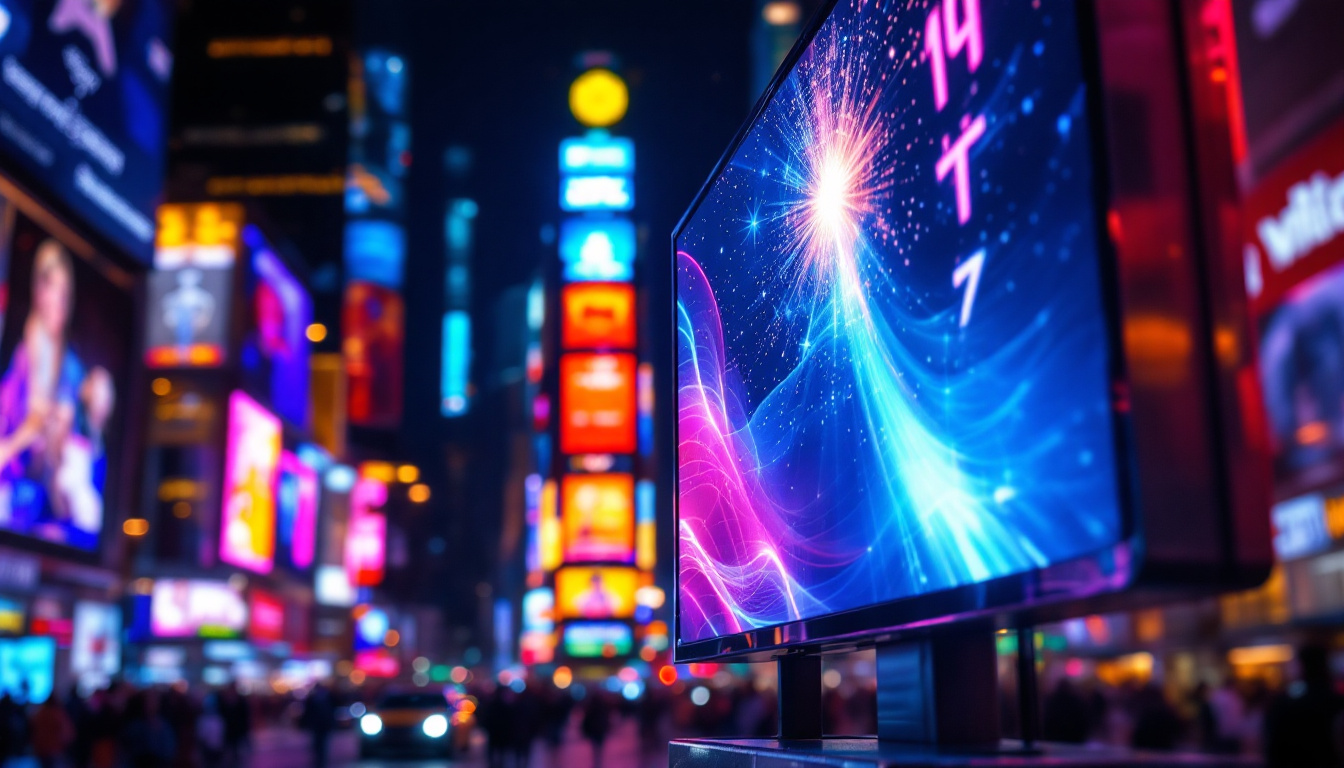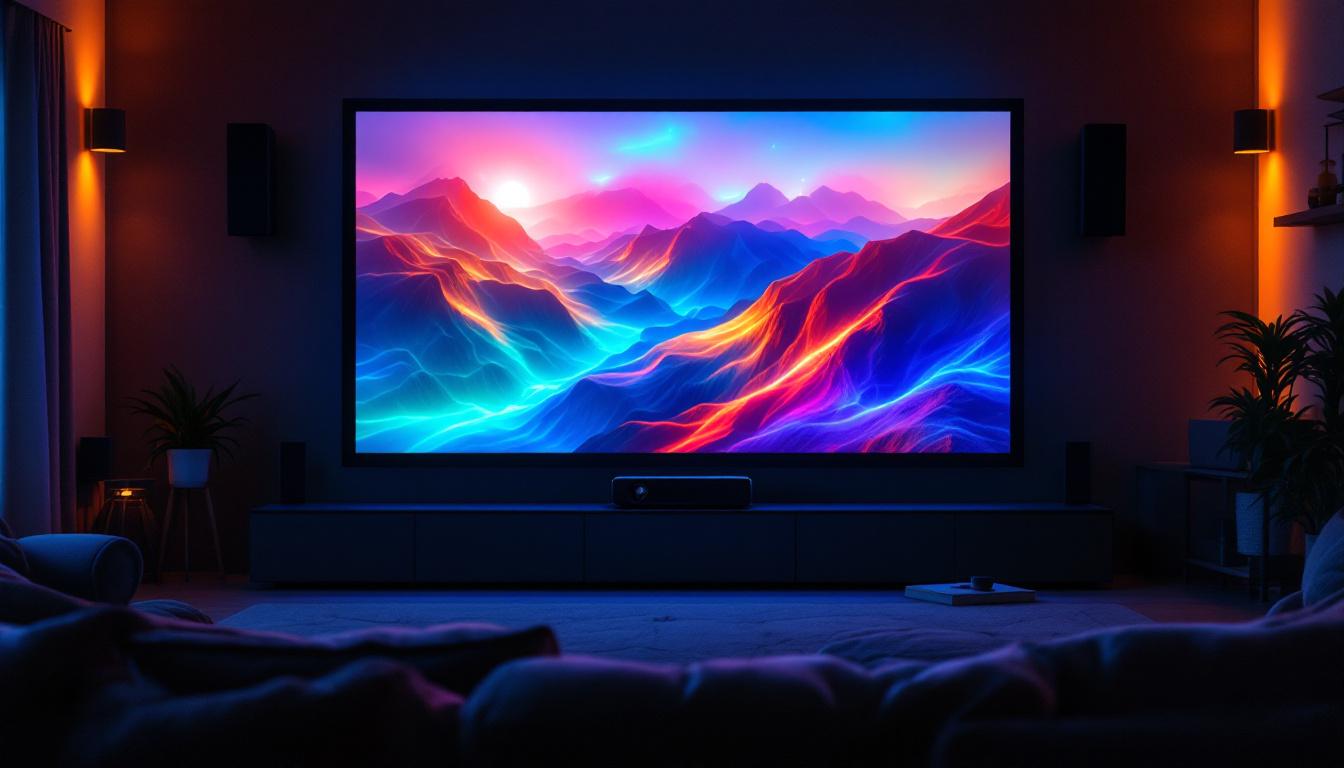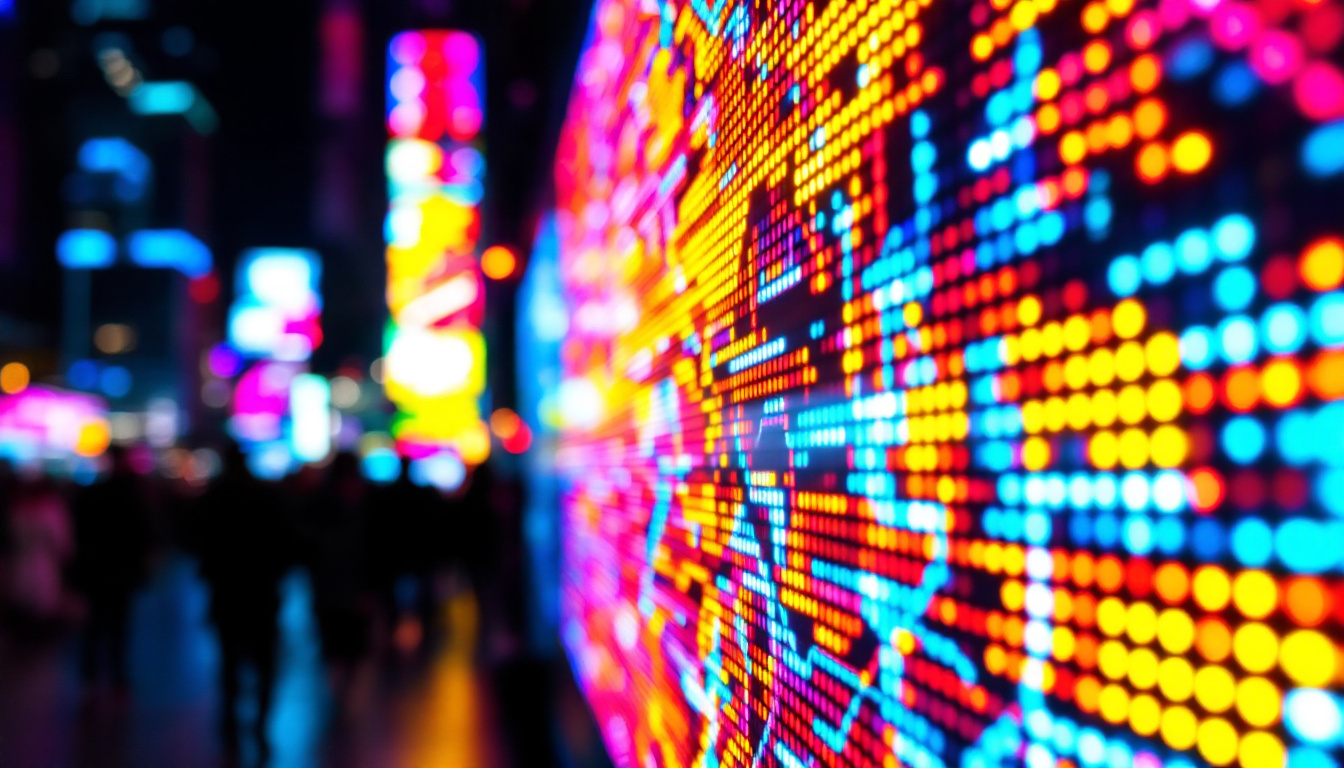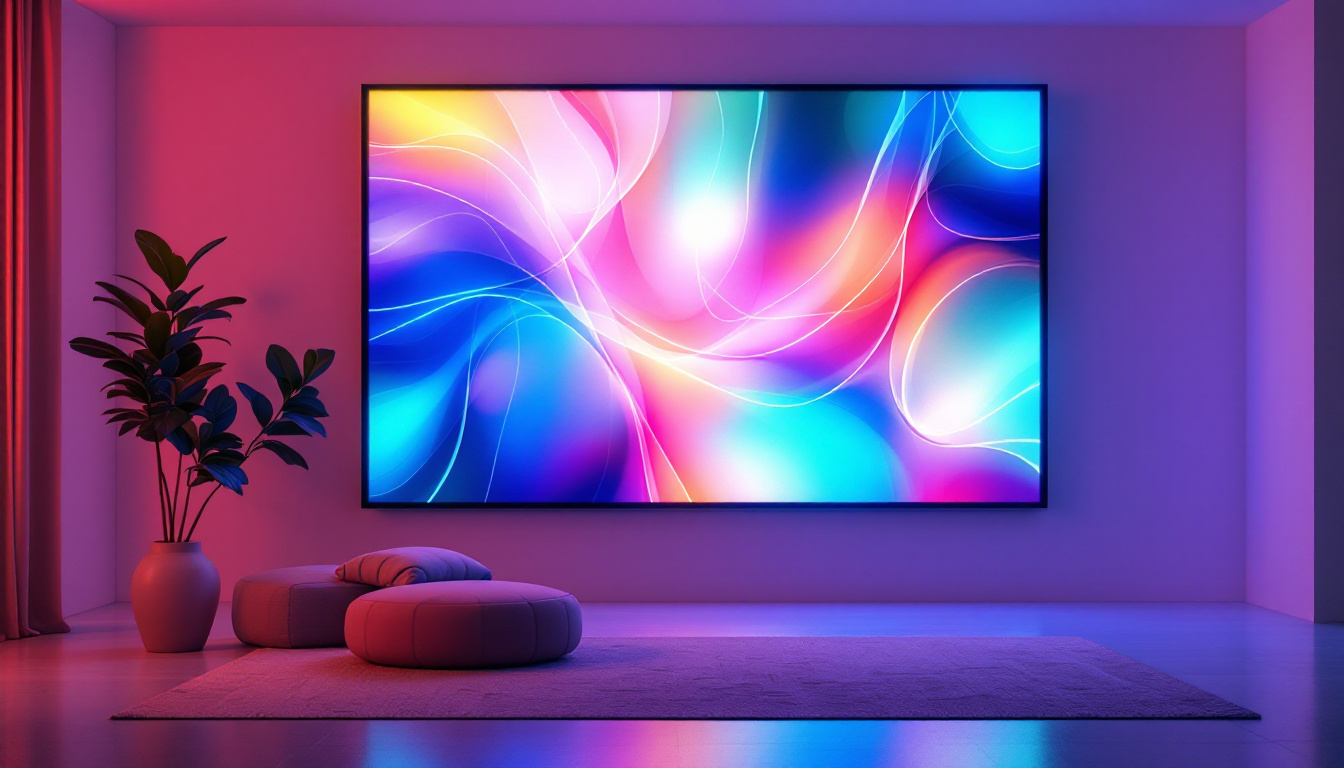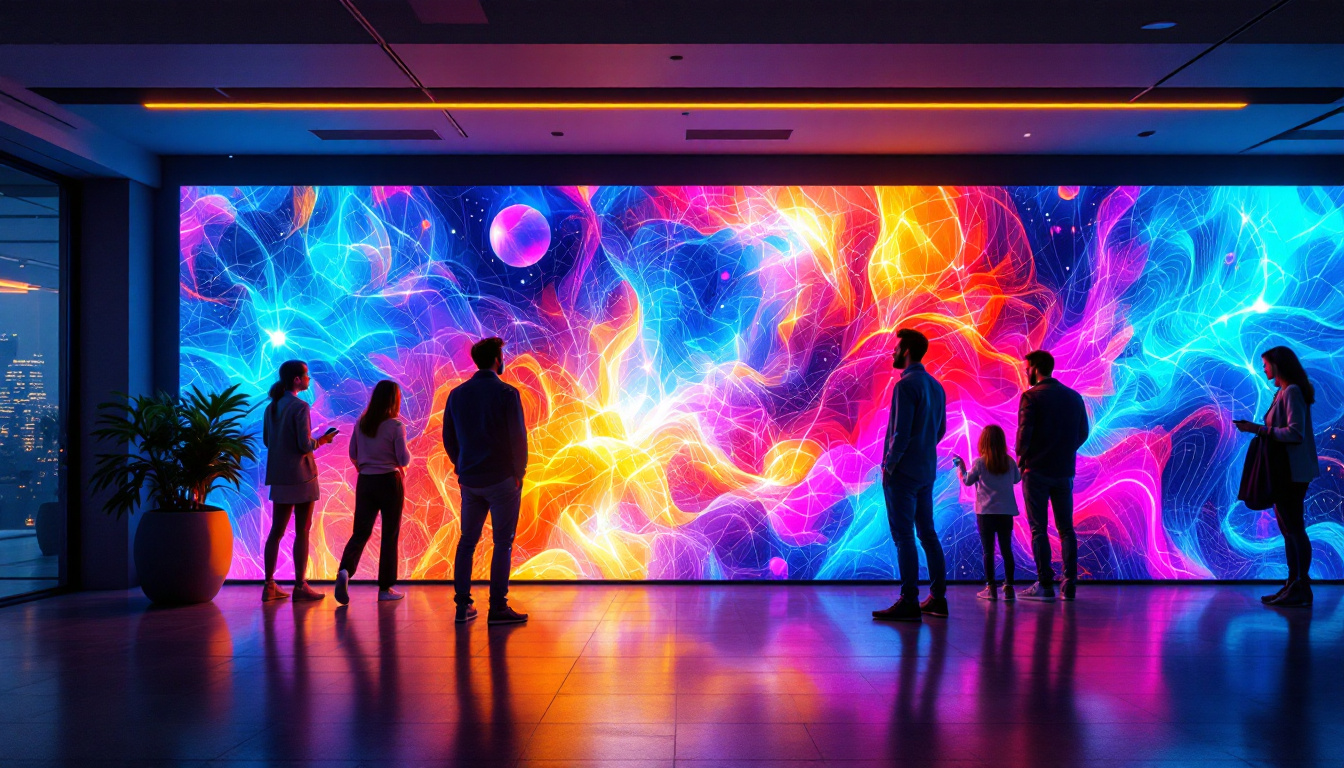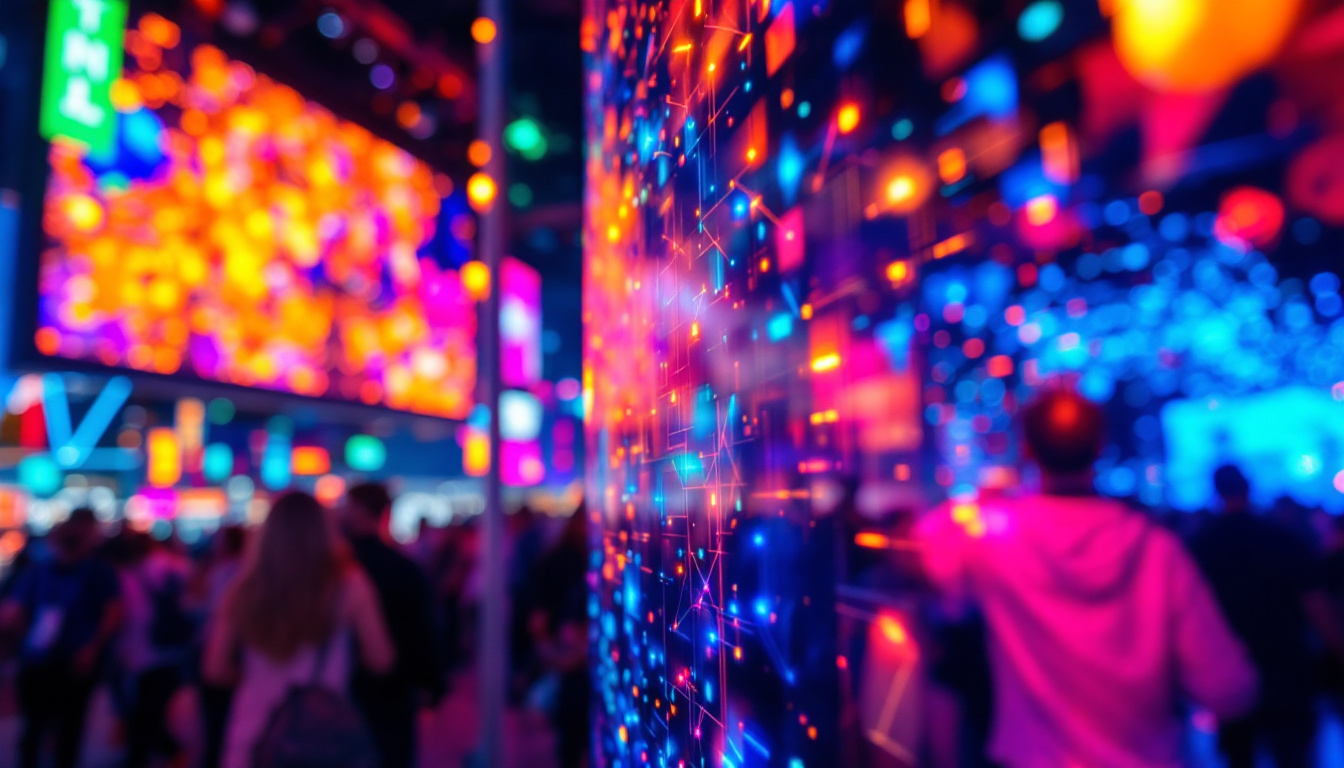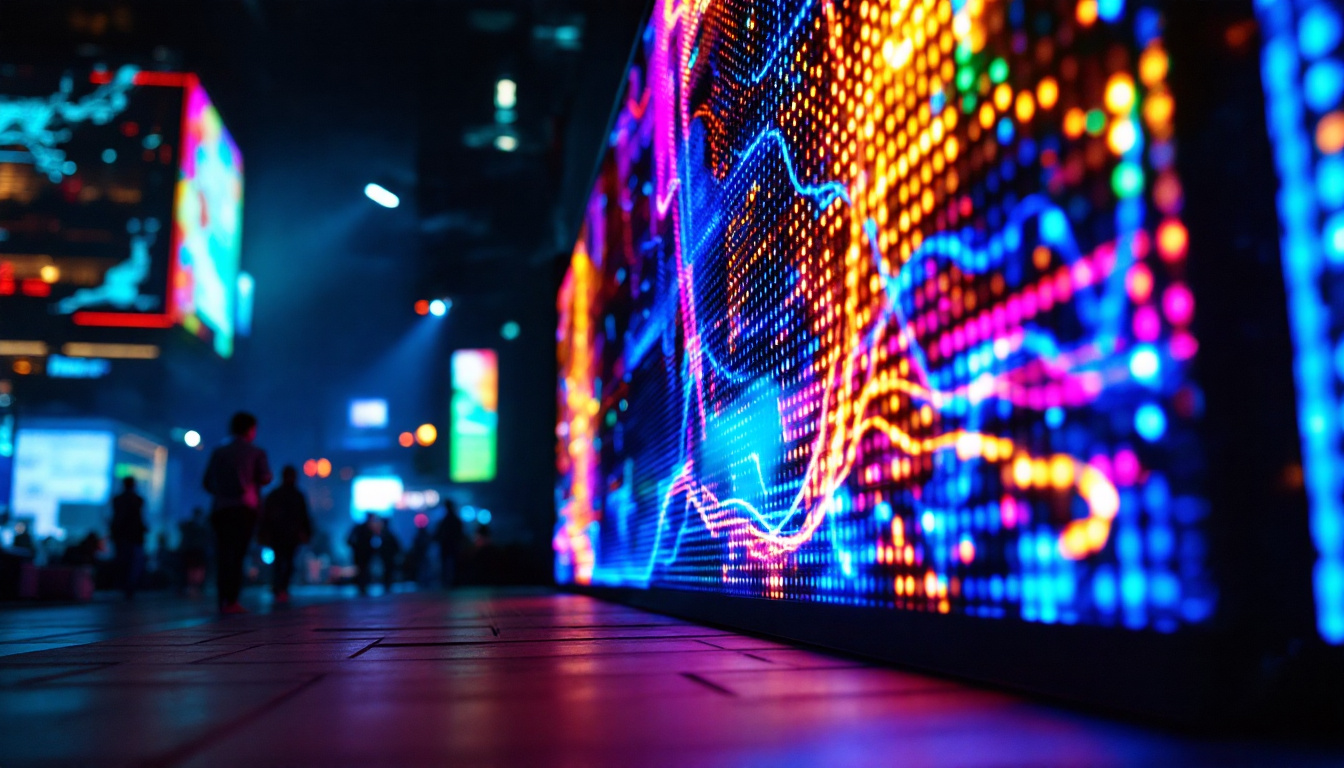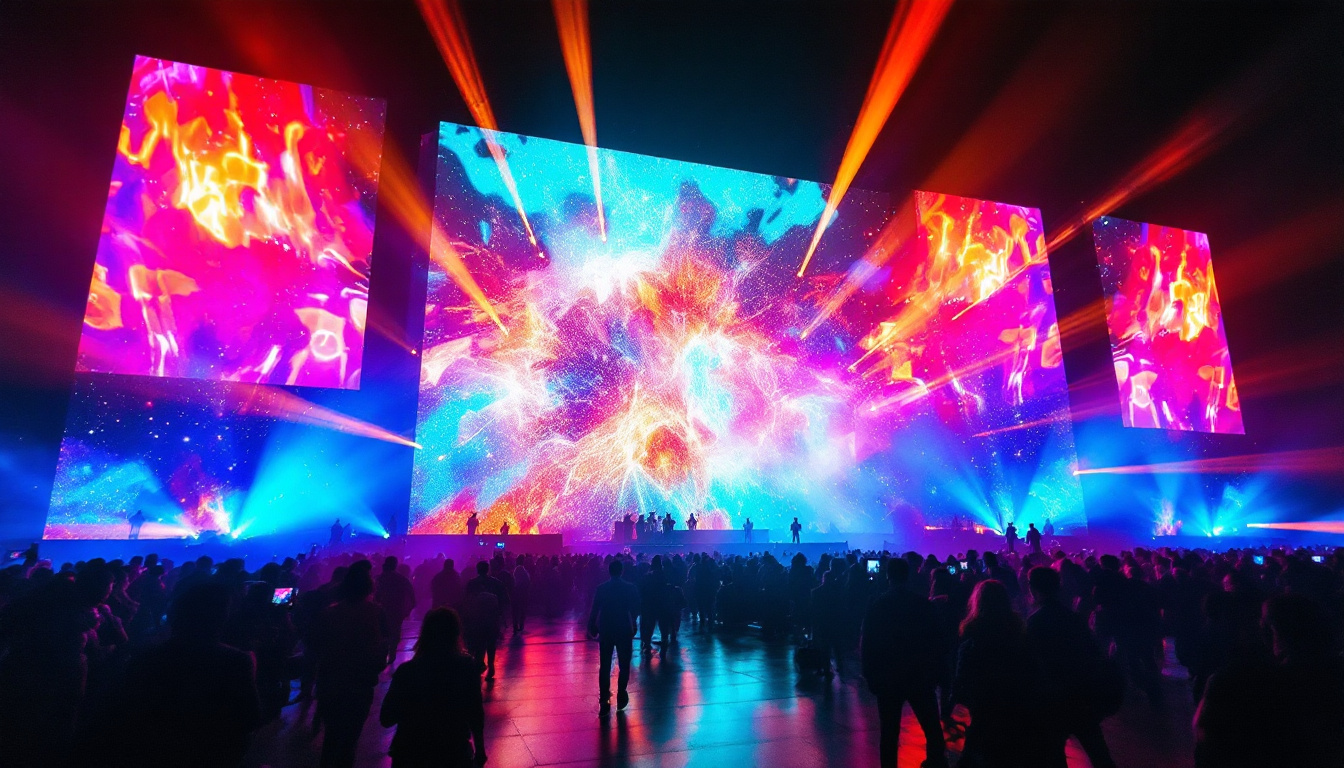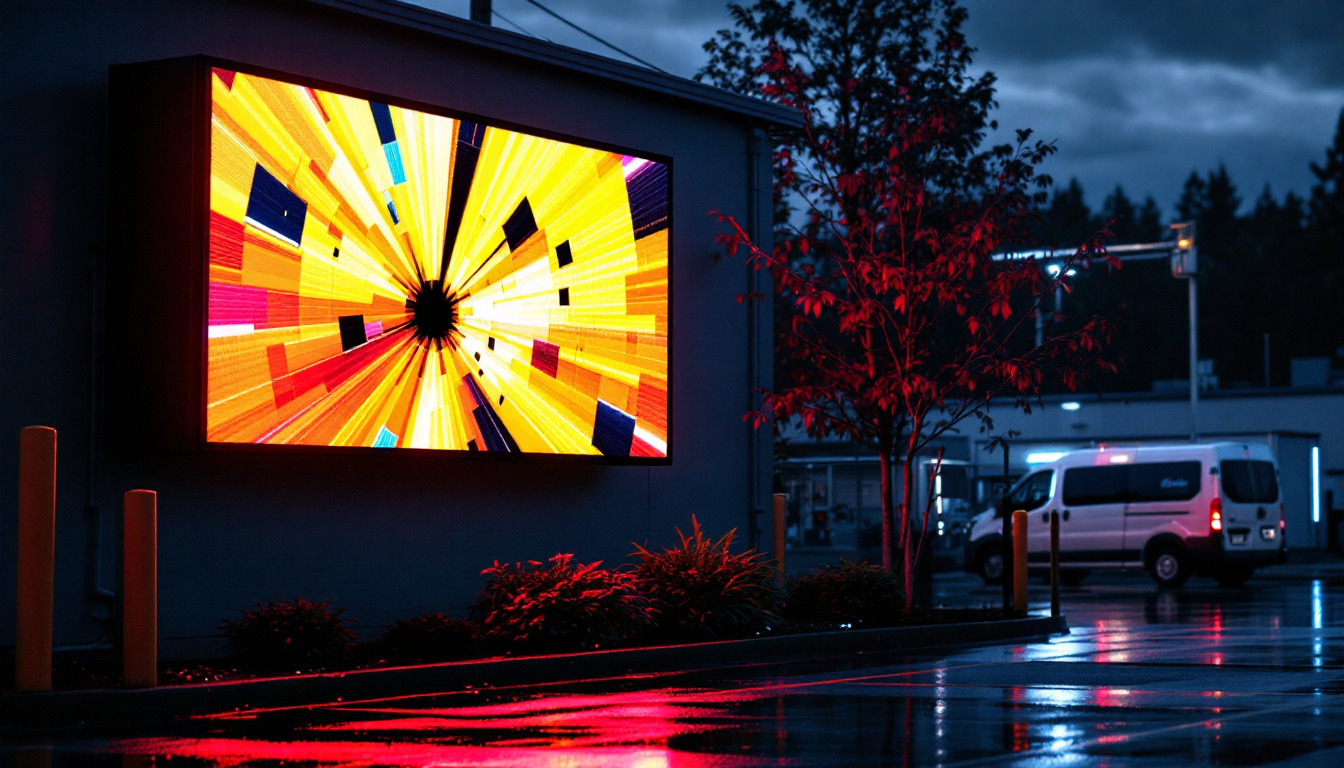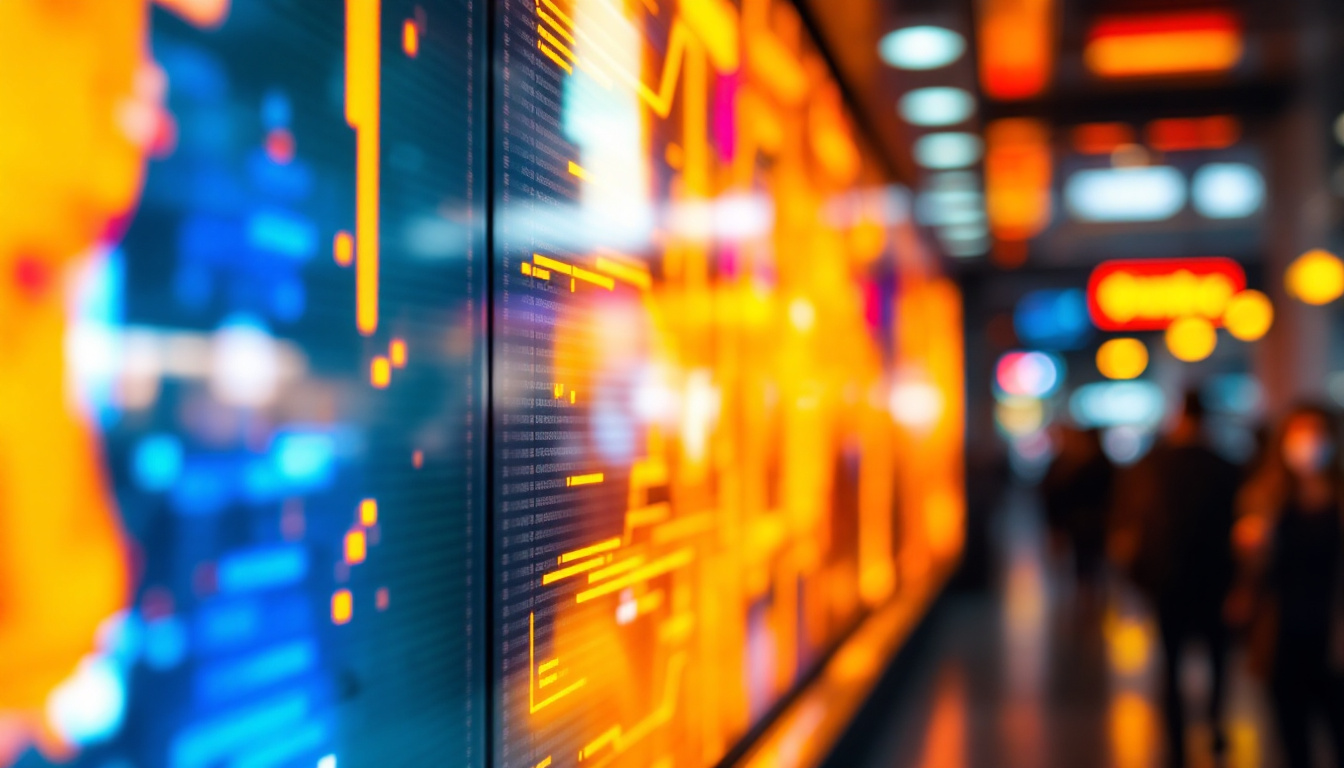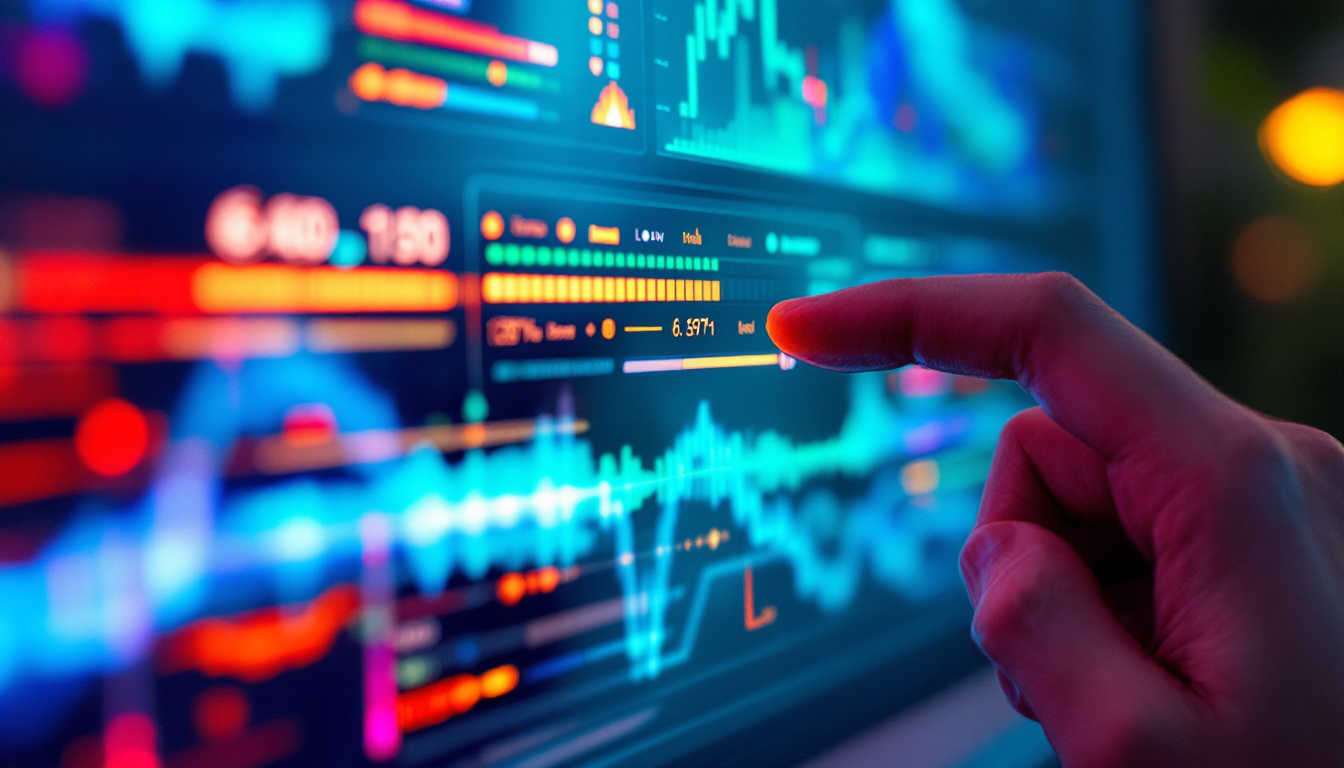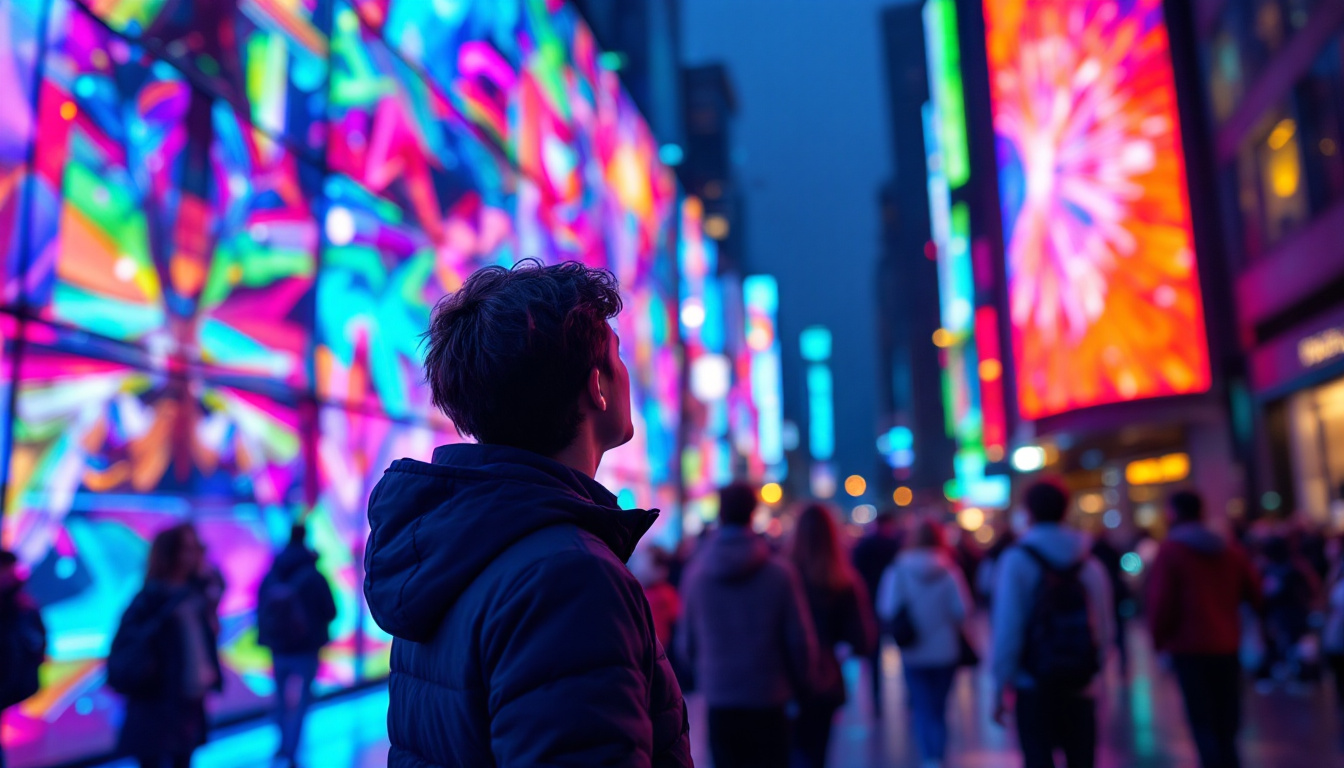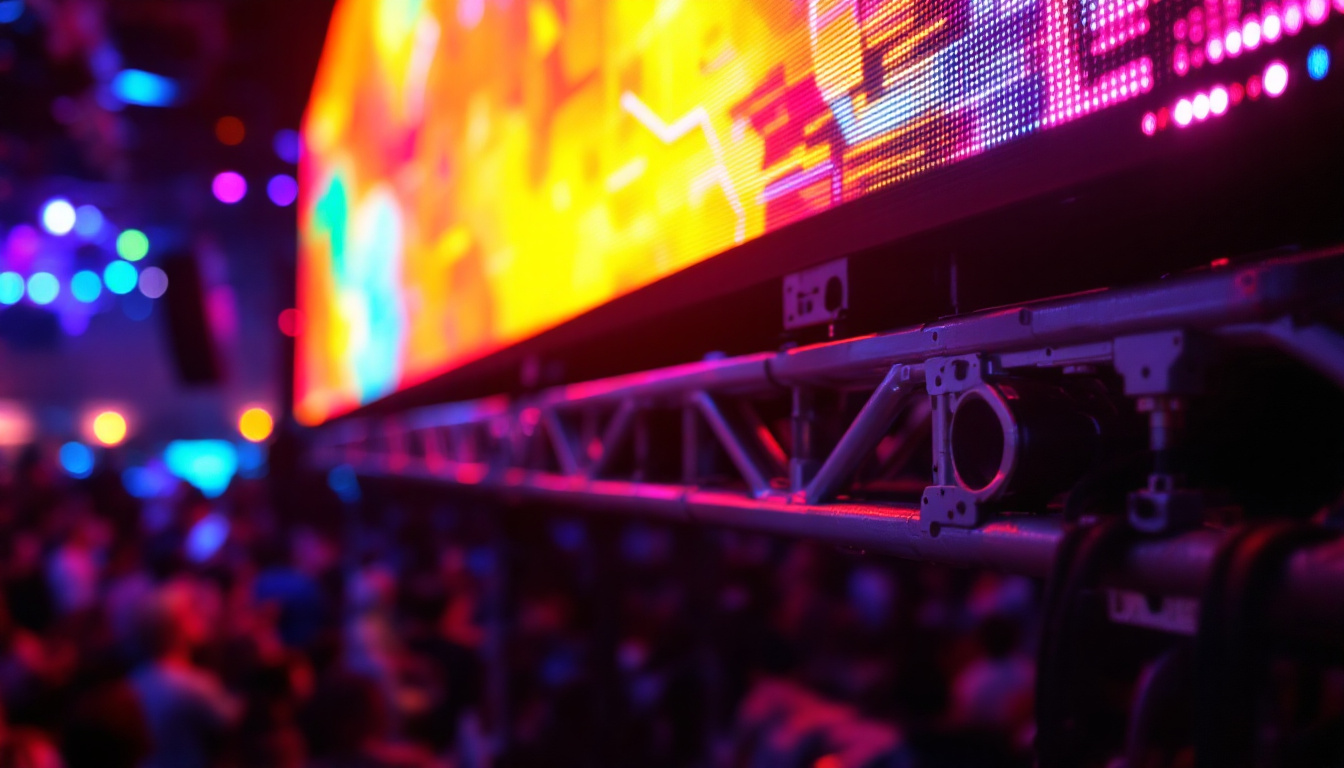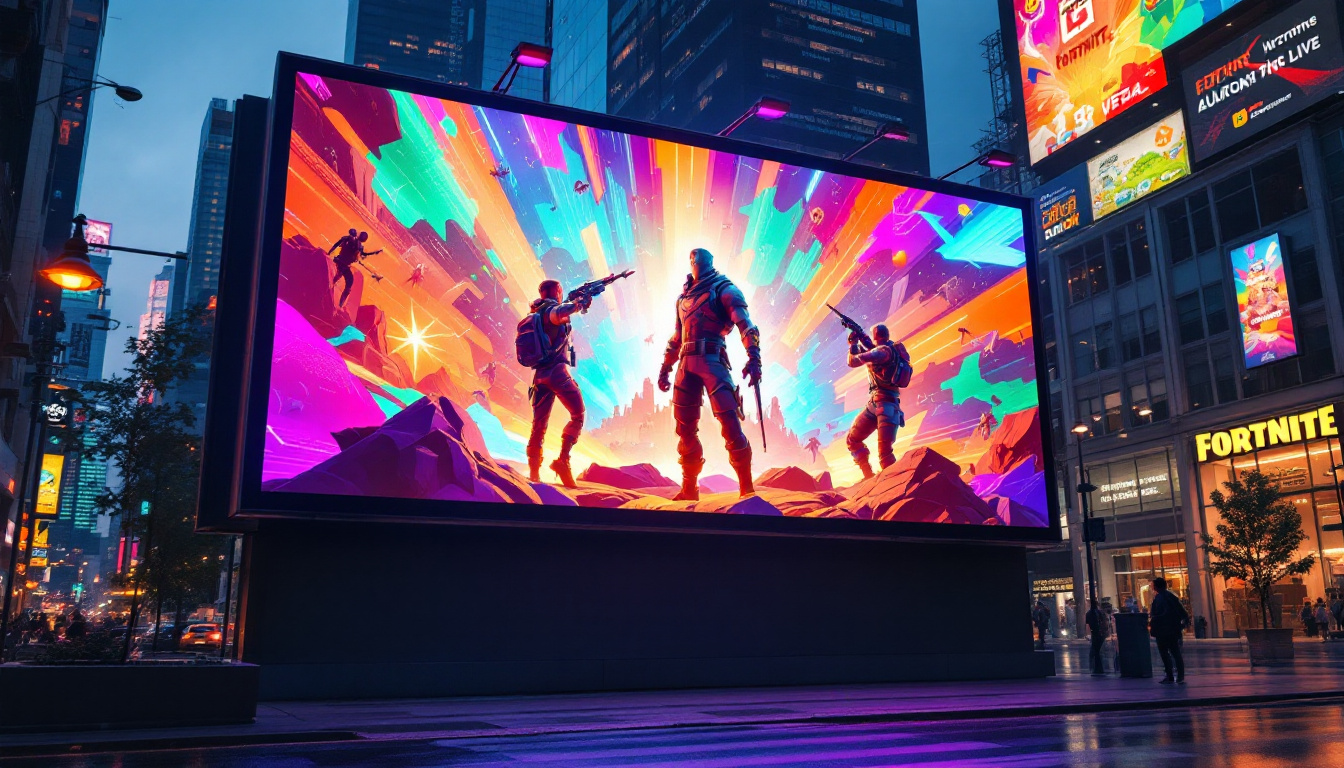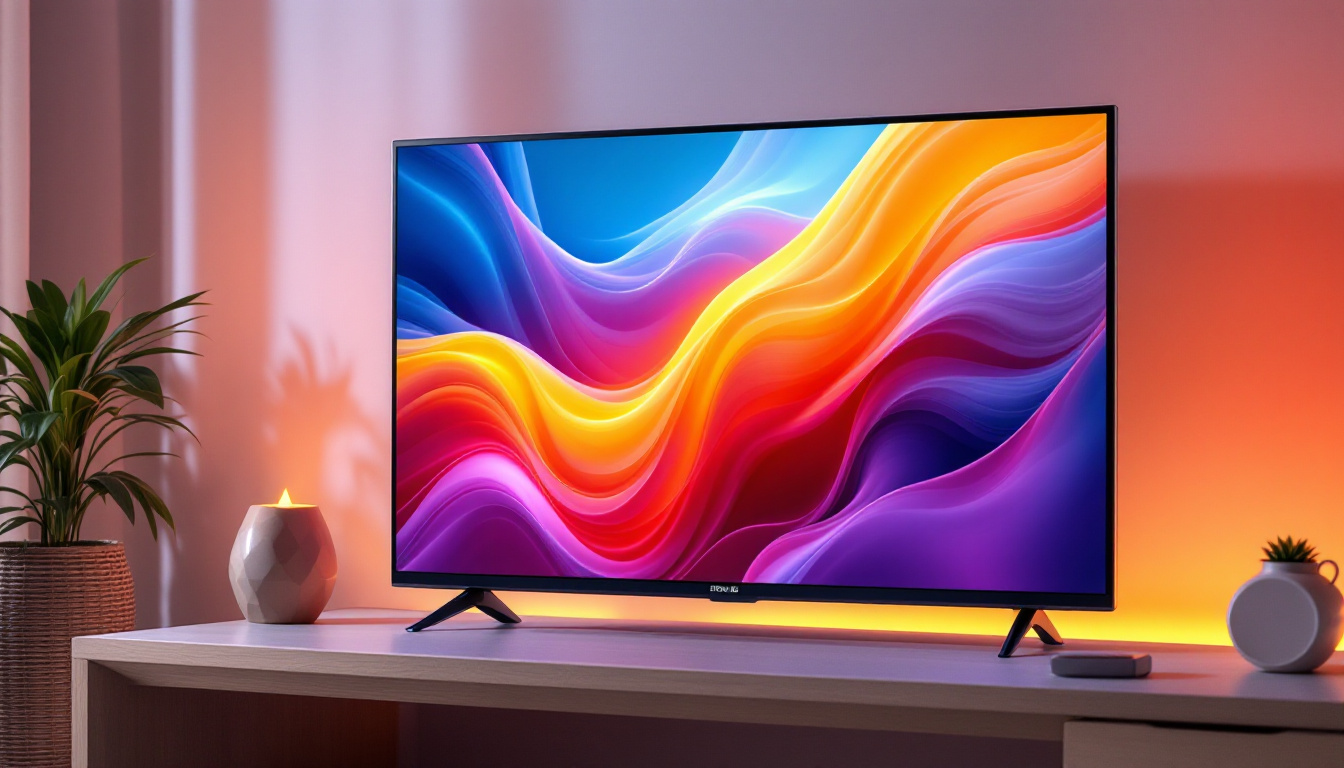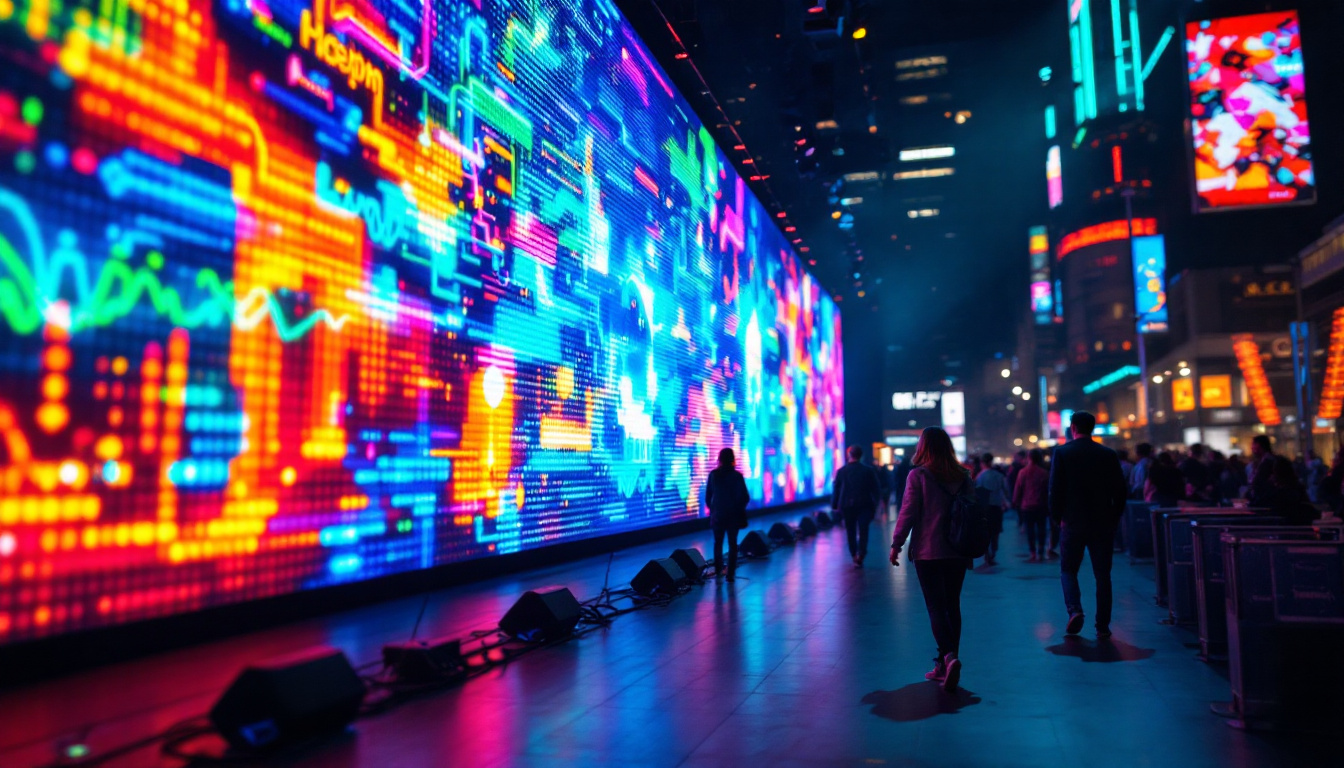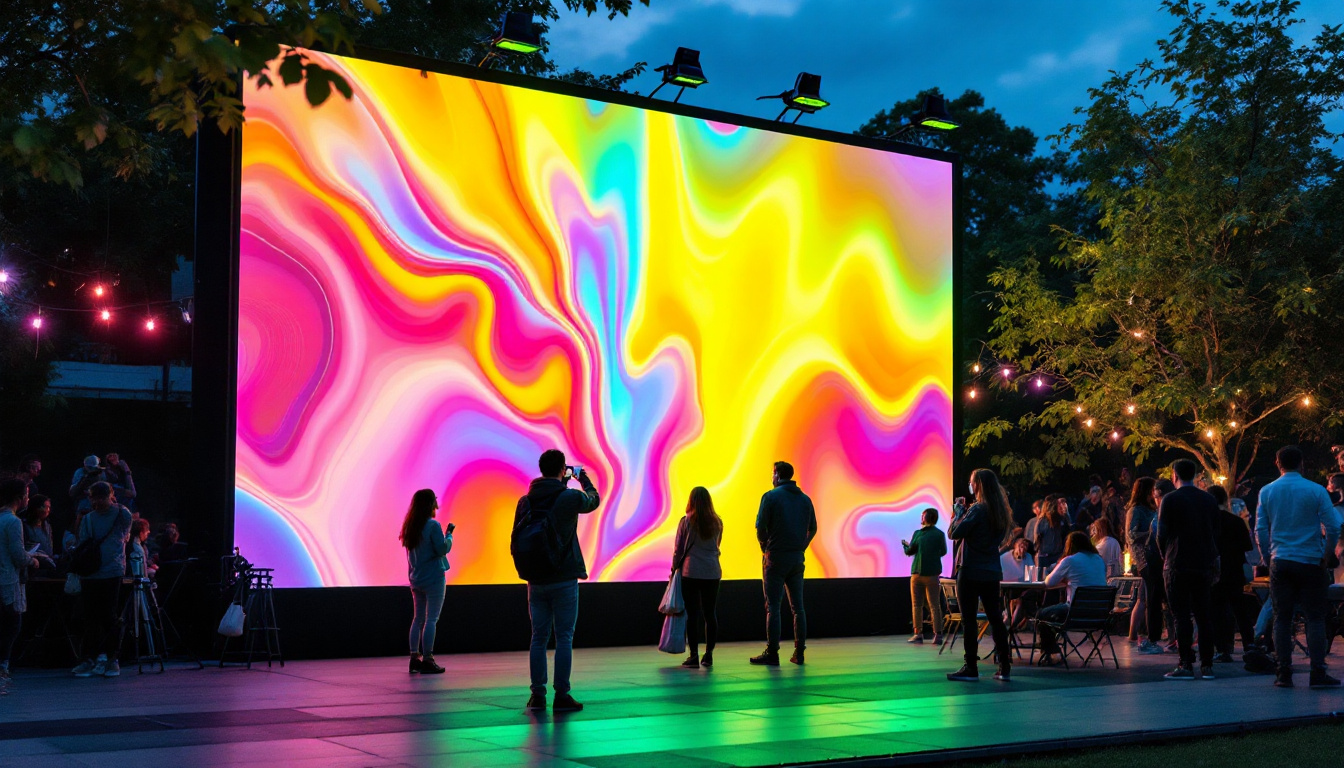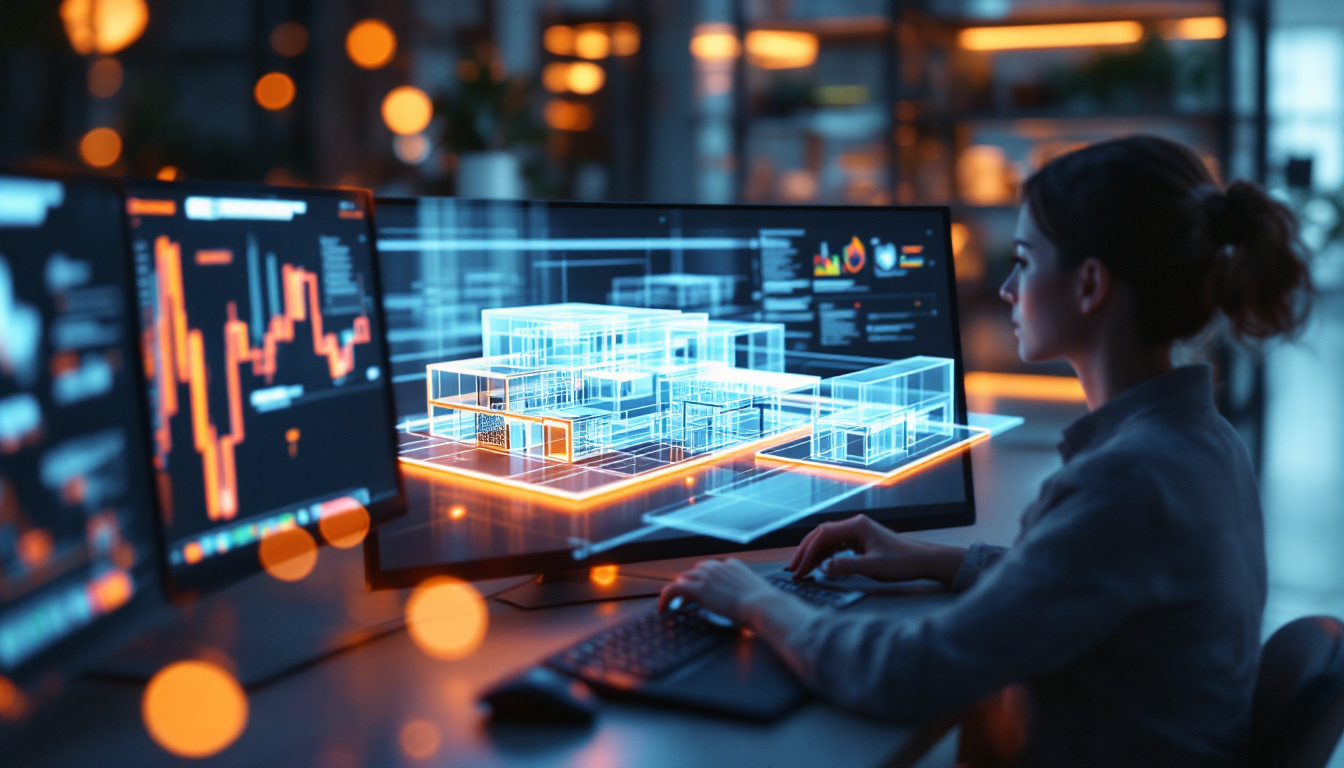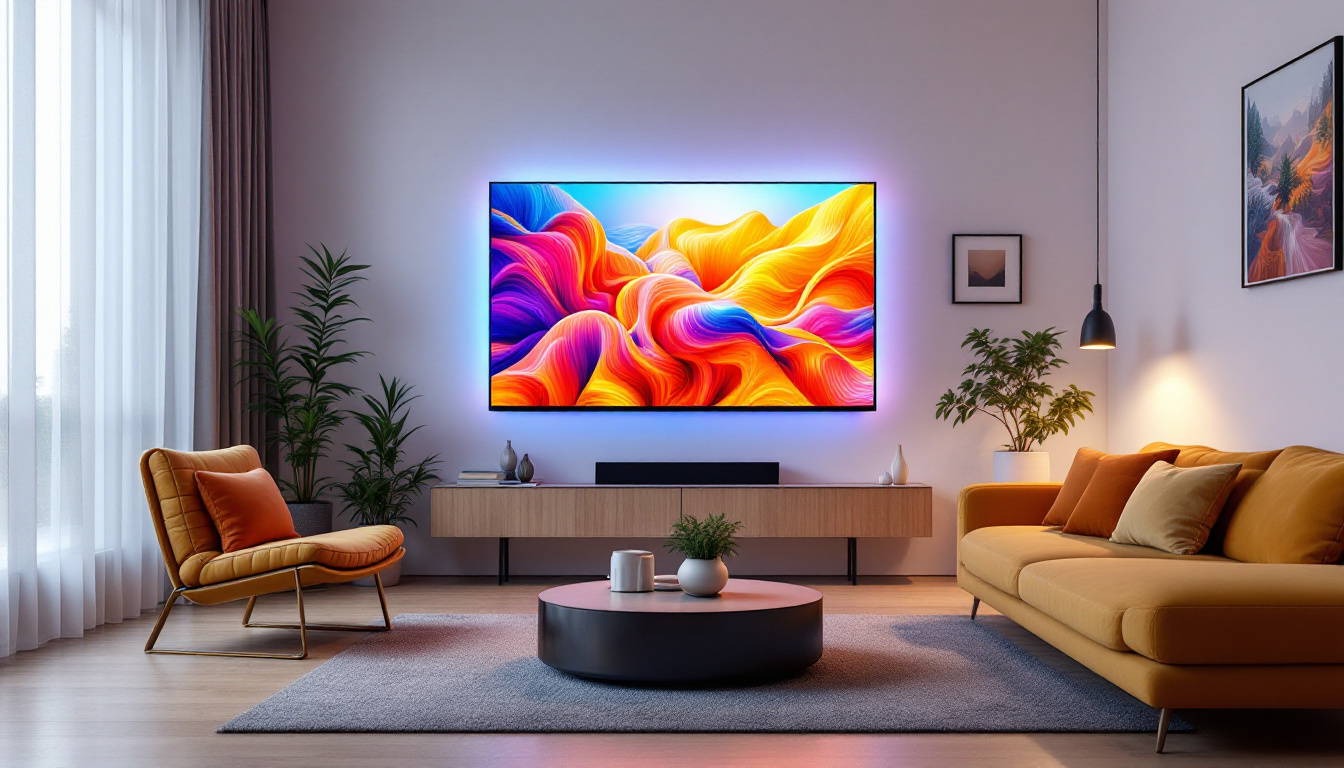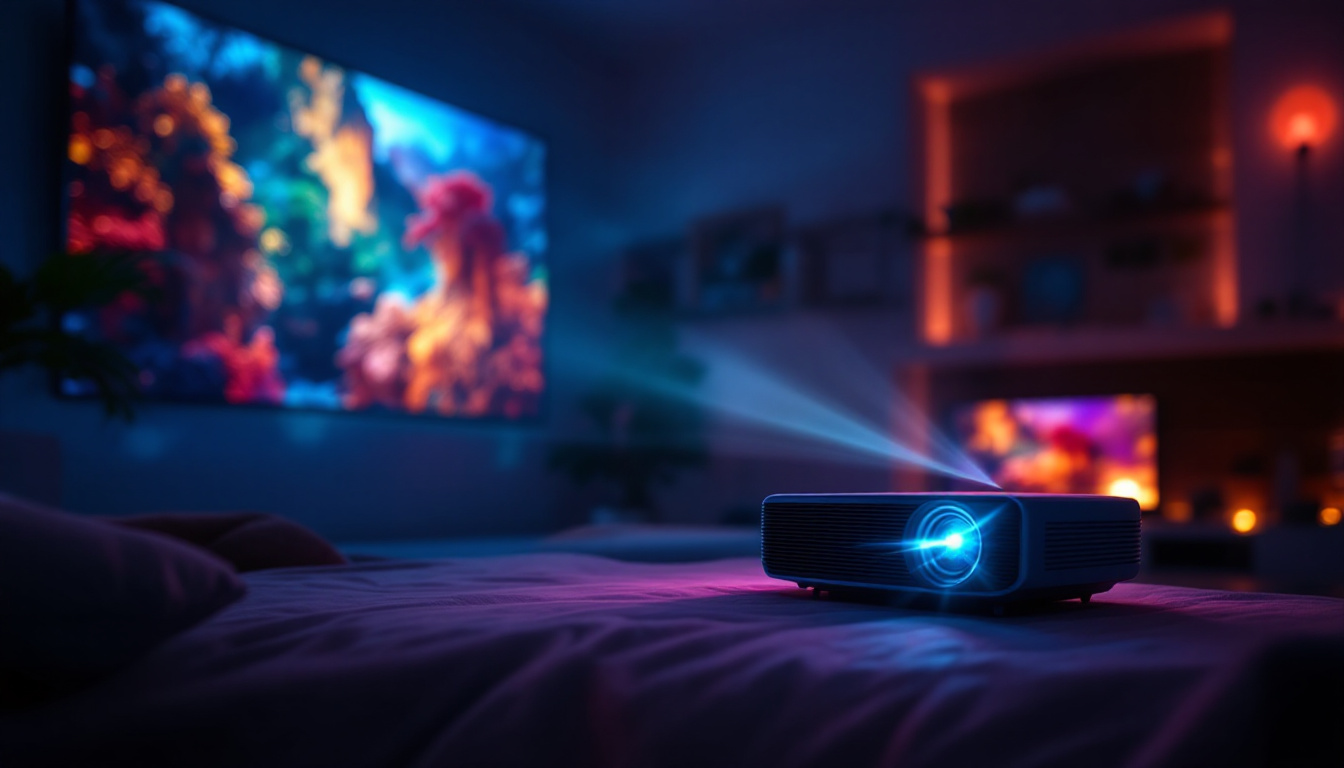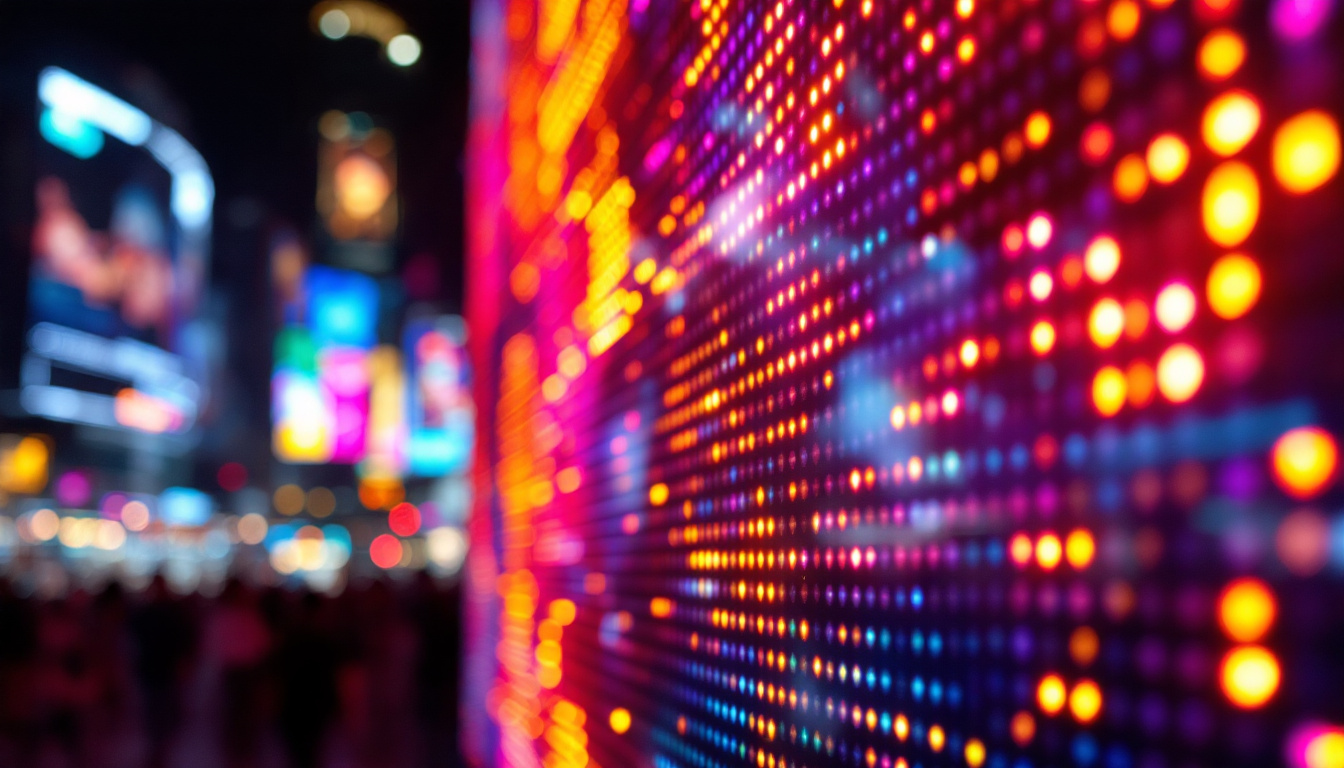In today’s fast-paced digital world, visual communication has become increasingly important. One of the most effective ways to capture attention and convey messages is through LED displays. These innovative technologies have revolutionized the advertising landscape, offering vibrant colors, high resolution, and versatility. This article delves into the intricacies of LED displays, exploring their types, applications, benefits, and future trends.
Understanding LED Technology
LED, or Light Emitting Diode, is a semiconductor device that emits light when an electric current passes through it. This technology has evolved significantly over the years, leading to the development of various types of LED displays. Understanding the fundamentals of LED technology is crucial for appreciating its applications and advantages.
The Basics of LED Displays
LED displays consist of an array of small LED lights that work together to create images and videos. Each LED can emit different colors, allowing for the creation of a full spectrum of hues. The combination of red, green, and blue (RGB) LEDs can produce millions of colors, making these displays vibrant and eye-catching.
These displays come in various configurations, including single-color, tri-color, and full-color displays. Single-color displays are often used for simple text and graphics, while full-color displays are ideal for dynamic content such as videos and animations. The technology behind these displays also allows for high refresh rates, which is essential for smooth video playback and reducing motion blur, making them suitable for fast-paced environments like sports events and concerts.
Types of LED Displays
LED displays can be categorized into several types based on their construction and application. The most common types include:
- Indoor LED Displays: These displays are designed for use in enclosed spaces, such as shopping malls, conference rooms, and theaters. They typically feature higher pixel density, providing sharper images and better viewing angles.
- Outdoor LED Displays: Built to withstand harsh weather conditions, outdoor LED displays are commonly used for billboards, sports arenas, and public transportation hubs. They are brighter and more durable than their indoor counterparts.
- Transparent LED Displays: These innovative displays allow for visibility through the screen while still presenting images and videos. They are often used in retail environments to create engaging advertising without obstructing views.
In addition to these common types, there are also specialized LED displays such as flexible LED screens, which can be bent and shaped to fit unique spaces and designs. This flexibility opens up new possibilities for creative installations in art galleries and exhibitions. Furthermore, advancements in LED technology have led to the development of microLED displays, which promise even higher resolutions and better energy efficiency, paving the way for future innovations in consumer electronics and digital signage.
Moreover, the integration of smart technology with LED displays is revolutionizing how content is delivered. With the advent of IoT (Internet of Things), LED displays can now be connected to the internet, allowing for real-time updates, remote management, and interactive features. This capability enhances user engagement and allows businesses to tailor their messaging based on audience analytics, making LED displays not just a visual tool but also a dynamic communication platform.
Applications of LED Displays
LED displays have found their way into various industries, showcasing their versatility and effectiveness. From advertising to entertainment, the applications are vast and varied.
Advertising and Marketing
One of the most prominent uses of LED displays is in advertising. Businesses utilize these displays to promote products and services, often in high-traffic areas where visibility is crucial. The ability to change content quickly and easily makes LED displays an attractive option for advertisers.
Dynamic content, such as videos and animations, can significantly enhance the impact of advertisements, capturing the attention of passersby. Moreover, the bright colors and high resolution of LED displays ensure that messages are delivered effectively, even in direct sunlight.
Entertainment and Events
In the entertainment industry, LED displays play a vital role in enhancing the audience experience. Concerts, festivals, and sporting events often feature large LED screens that display live feeds, graphics, and promotional content. These displays create an immersive environment, engaging audiences and elevating the overall experience.
Furthermore, LED technology is increasingly used in stage productions and theatrical performances. The versatility of LED displays allows for creative set designs and dynamic backdrops, contributing to the storytelling aspect of performances.
Information and Wayfinding
LED displays are also widely used for informational purposes. Airports, train stations, and bus terminals utilize LED screens to provide real-time information about arrivals, departures, and delays. These displays are essential for ensuring smooth operations and enhancing passenger experience.
Additionally, LED displays can serve as wayfinding tools in large venues, helping visitors navigate through complex spaces. Interactive LED displays can provide maps and directions, making it easier for people to find their way.
Benefits of LED Displays
The advantages of using LED displays are numerous, contributing to their growing popularity across various sectors. Understanding these benefits can help businesses make informed decisions when considering display options.
Energy Efficiency
One of the most significant benefits of LED displays is their energy efficiency. Compared to traditional display technologies, such as LCD and incandescent lighting, LEDs consume considerably less power. This reduced energy consumption not only lowers operational costs but also minimizes the environmental impact.
Furthermore, LED displays have a longer lifespan, often lasting up to 100,000 hours or more. This longevity means fewer replacements and less waste, making them a more sustainable choice for businesses.
High Brightness and Visibility
LED displays are known for their exceptional brightness, making them suitable for both indoor and outdoor applications. The ability to maintain visibility in various lighting conditions is a significant advantage, particularly for outdoor advertising where sunlight can diminish the effectiveness of other display technologies.
The high contrast ratio of LED displays ensures that images and text remain clear and legible, even from a distance. This quality is particularly important in crowded environments where capturing attention quickly is essential.
Versatility and Customization
LED displays offer remarkable versatility, allowing for various configurations and sizes. Businesses can choose from a range of pixel pitches, ensuring that the display meets their specific needs in terms of resolution and viewing distance.
Moreover, LED displays can be customized to fit unique shapes and designs, enabling creative installations that enhance brand identity. This flexibility makes them suitable for a wide range of applications, from retail displays to large-scale advertising campaigns.
Challenges and Considerations
While LED displays offer numerous benefits, there are also challenges and considerations that businesses must address. Understanding these factors can help organizations make informed decisions regarding their display investments.
Initial Costs
The initial investment for LED displays can be higher than traditional display technologies. Although the long-term savings in energy costs and maintenance can offset this expense, businesses must be prepared for the upfront costs associated with purchasing and installing LED displays.
It is essential to conduct a thorough cost-benefit analysis to determine whether the investment aligns with the organization’s goals and budget. In many cases, the advantages of LED technology justify the initial expenditure.
Maintenance and Upkeep
While LED displays are known for their durability, they still require regular maintenance to ensure optimal performance. Dust, dirt, and environmental factors can affect the display’s brightness and clarity over time. Regular cleaning and inspections are necessary to maintain the display’s appearance and functionality.
Additionally, businesses should consider the availability of technical support and repair services when investing in LED displays. Having access to qualified technicians can help address any issues that may arise and minimize downtime.
The Future of LED Displays
The future of LED displays looks promising, with ongoing advancements in technology and design. As industries continue to evolve, the demand for innovative display solutions is expected to grow.
Advancements in Technology
Emerging technologies, such as microLED and miniLED, are set to revolutionize the display industry. These technologies offer even higher resolutions, improved color accuracy, and enhanced energy efficiency. As these advancements become more mainstream, businesses will have access to cutting-edge display solutions that can elevate their marketing and communication efforts.
Furthermore, the integration of artificial intelligence and machine learning into display technology is expected to enhance user experiences. Smart displays that can adapt content based on audience behavior and preferences will provide businesses with valuable insights and improved engagement.
Integration with Digital Signage
As digital signage continues to gain traction, the integration of LED displays with digital content management systems will become increasingly important. This integration will allow businesses to manage and update content seamlessly, ensuring that messages remain relevant and timely.
Moreover, the ability to analyze data and audience engagement will enable businesses to optimize their advertising strategies, leading to improved return on investment. The synergy between LED displays and digital signage will create opportunities for more dynamic and interactive advertising experiences.
Conclusion
LED displays have transformed the way businesses communicate and engage with their audiences. With their vibrant colors, high brightness, and versatility, they offer a powerful tool for advertising, entertainment, and information dissemination. While challenges such as initial costs and maintenance exist, the benefits of LED technology far outweigh the drawbacks.
As technology continues to advance, the future of LED displays looks bright. Businesses that embrace these innovations will be well-positioned to capture attention and convey messages effectively in an increasingly competitive landscape. Investing in LED displays is not just a trend; it is a strategic move towards enhancing brand visibility and audience engagement.
Illuminate Your Message with LumenMatrix
Ready to elevate your visual communication and captivate your audience like never before? Discover LumenMatrix’s comprehensive range of LED display solutions, from the vibrant Indoor LED Wall Display to the robust Outdoor LED Wall Display, and beyond. Whether you need a dynamic Vehicle LED Display, a sleek LED Poster Display, or a custom solution tailored to your unique requirements, LumenMatrix is here to transform your space into a mesmerizing visual experience. Don’t just share your message—make it shine. Check out LumenMatrix LED Display Solutions today and step into the future of digital engagement.

